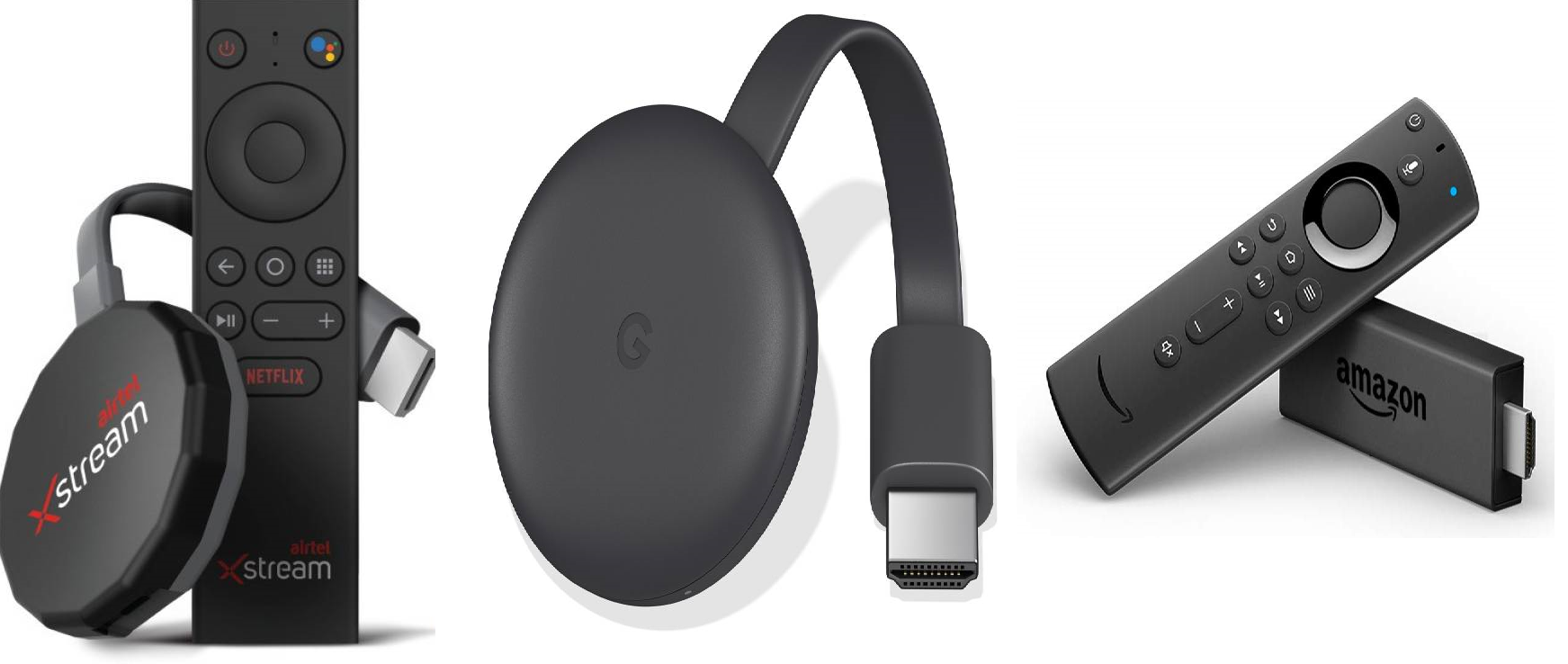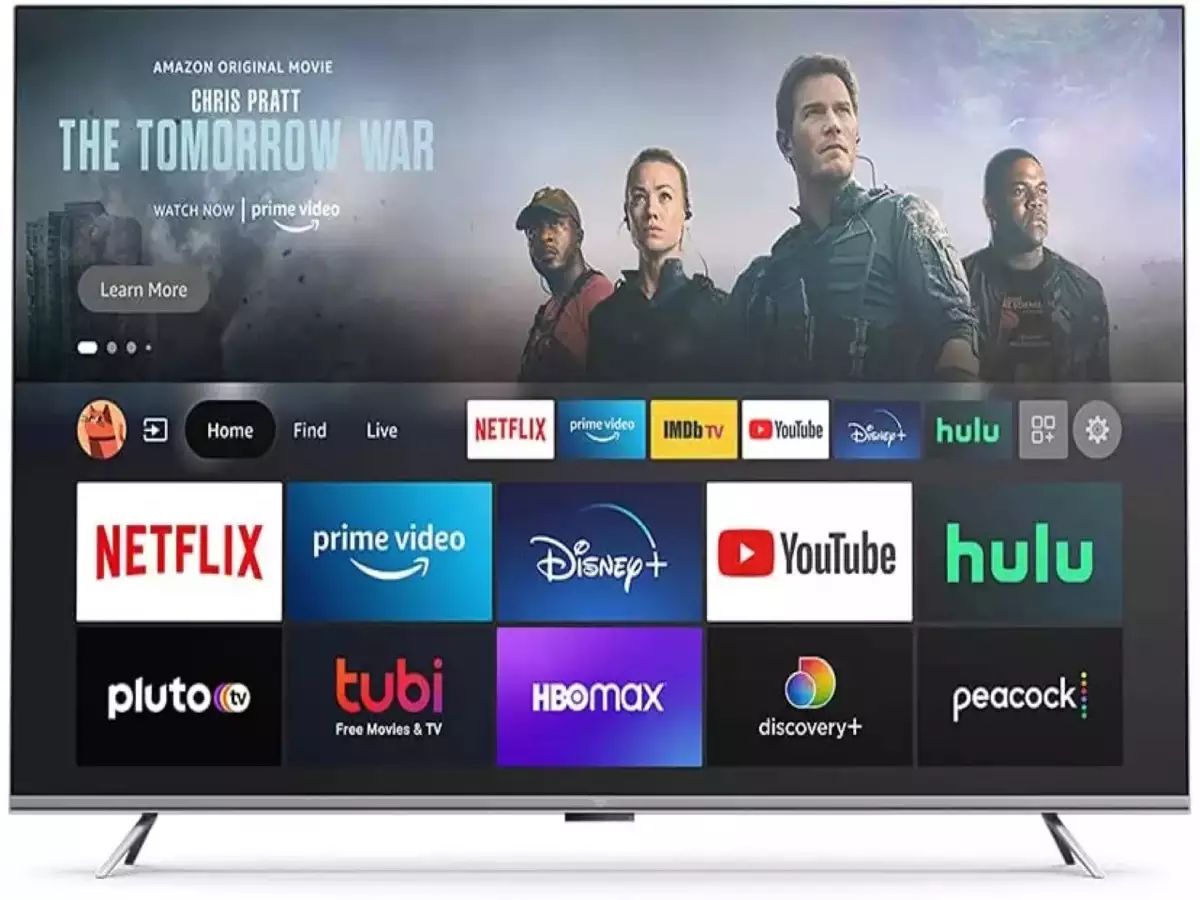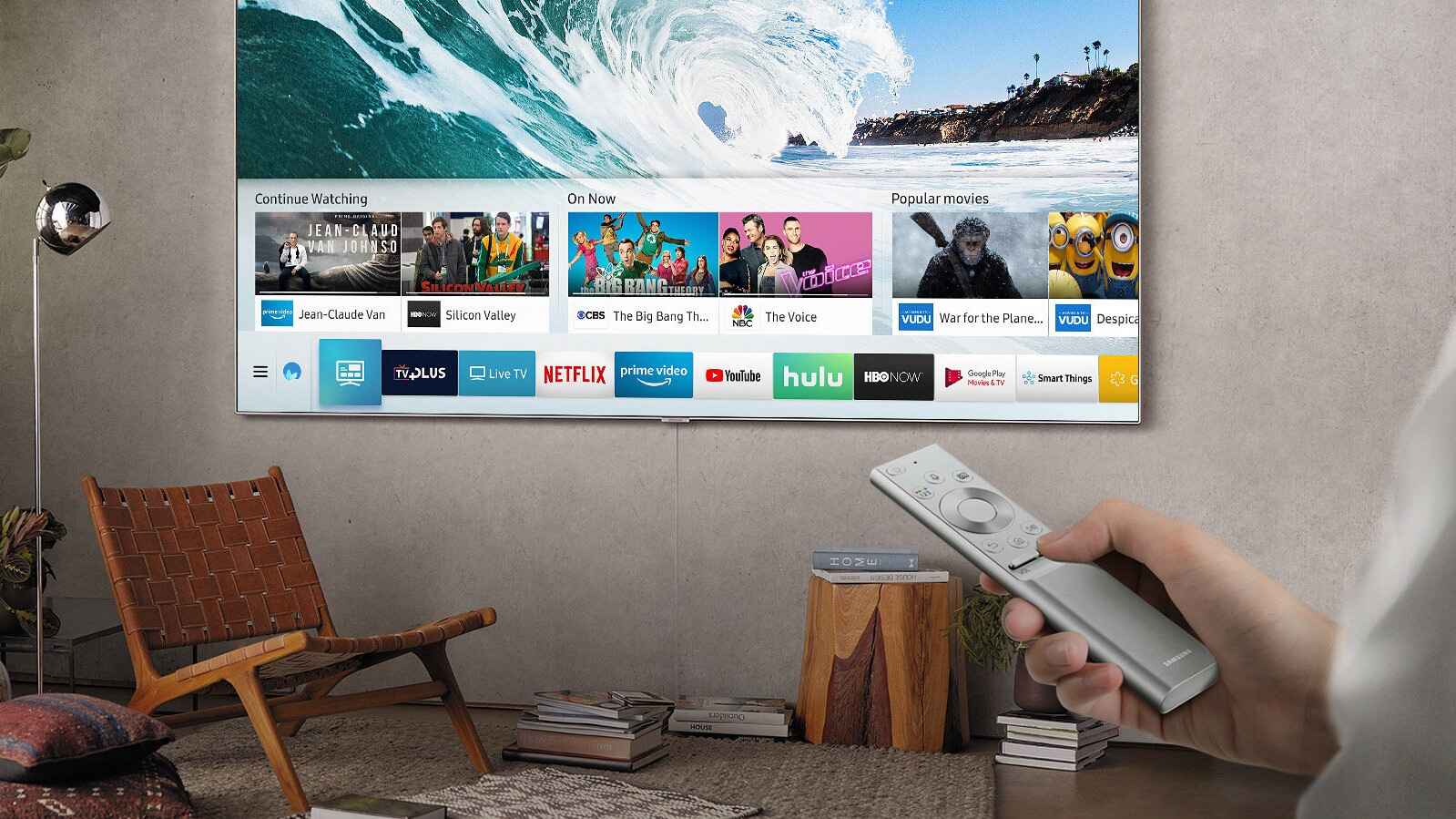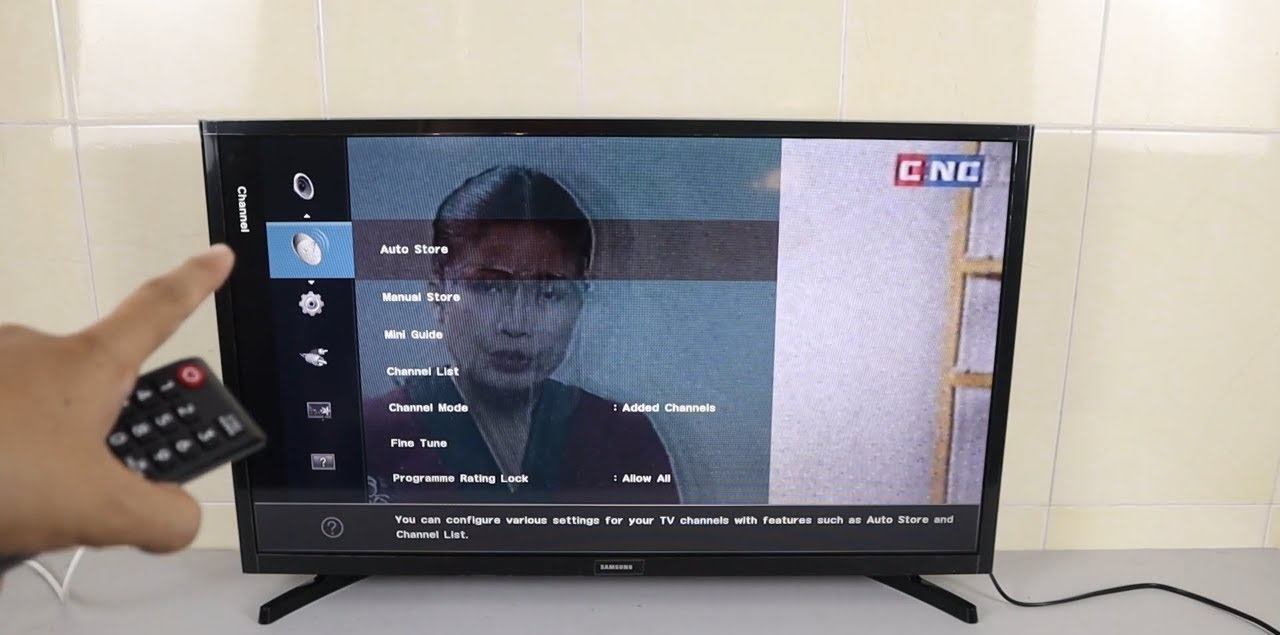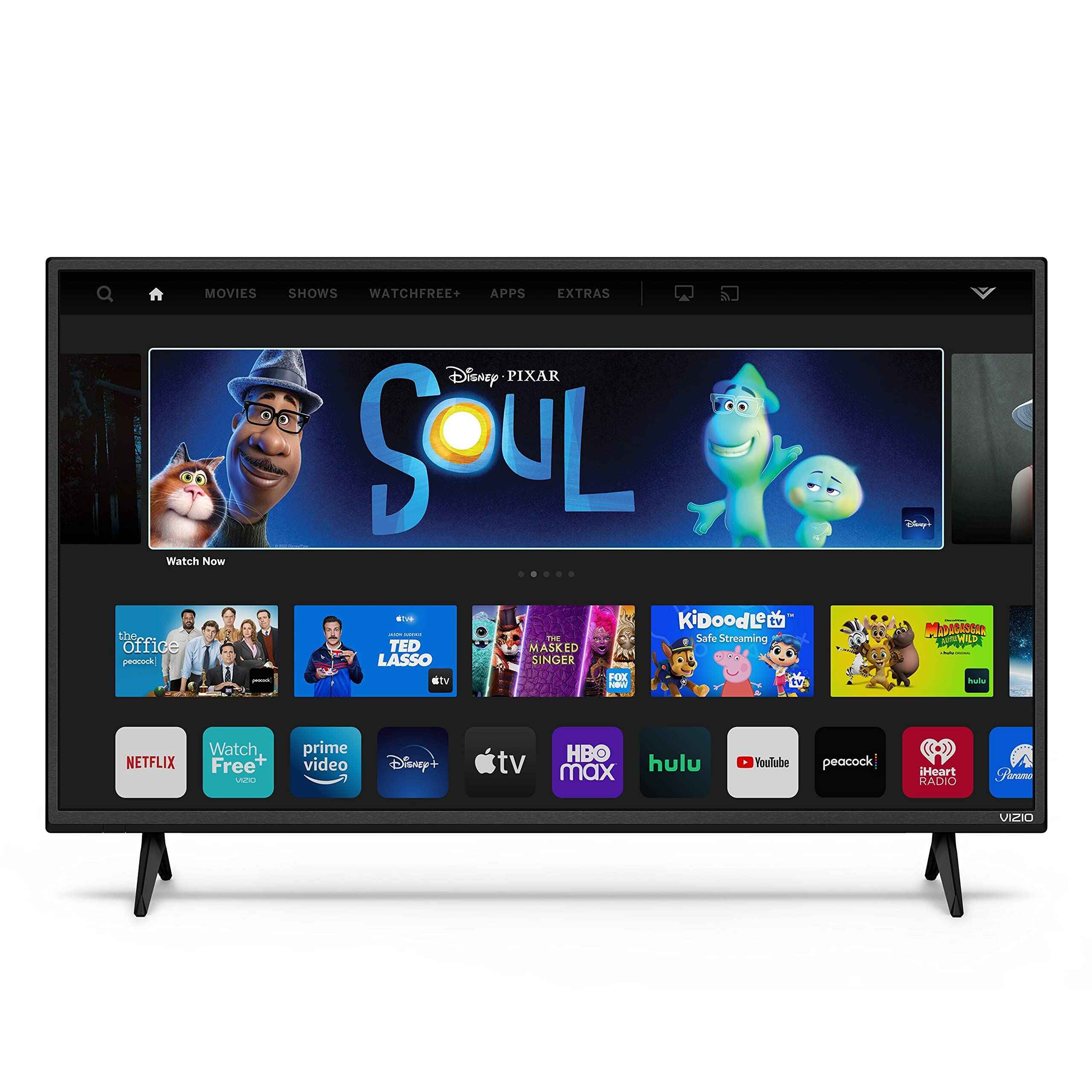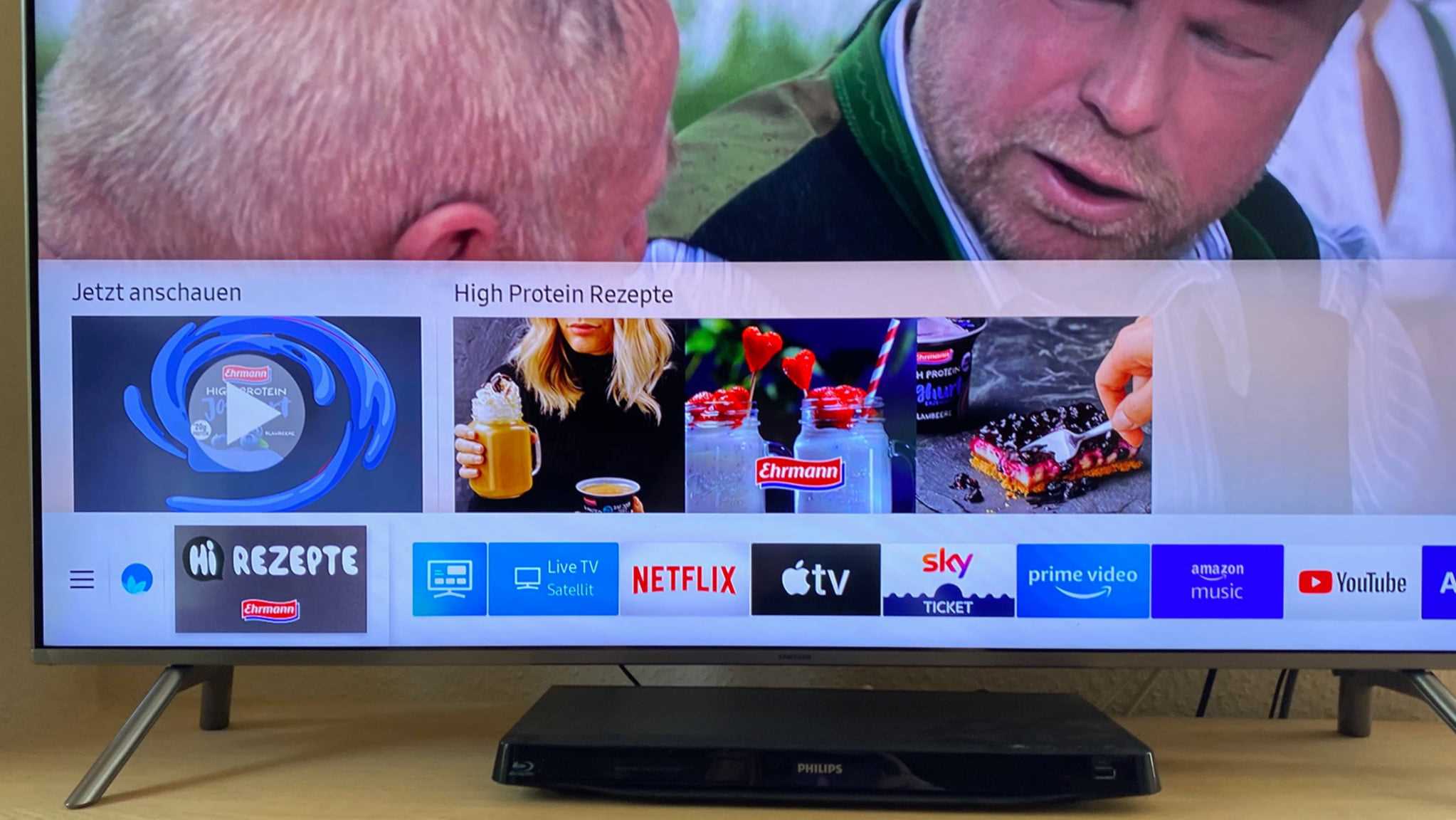Introduction
In today’s technologically advanced world, the television landscape has evolved significantly. Gone are the days of traditional televisions that could only display a limited number of channels. The advent of smart TVs has revolutionized the way we consume entertainment content, blurring the line between television and the internet. But what exactly is the difference between a smart TV and a regular TV?
A smart TV, as the name implies, is a television that is equipped with advanced features and capabilities that allow it to connect to the internet and access a wide range of online content. These TVs typically come with built-in internet connectivity, either through Wi-Fi or Ethernet, and offer a variety of streaming services, web browsing capabilities, and even access to social media platforms. On the other hand, a regular TV, sometimes referred to as a standard or basic TV, is a television that does not have internet connectivity and is designed solely for the purpose of receiving and displaying over-the-air or cable television broadcasts.
The evolution of smart TVs can be attributed to rapid advancements in technology. With the increasing popularity of streaming services such as Netflix, Hulu, and Amazon Prime Video, consumers are now looking for more than just a television that can display traditional broadcast channels. They want an all-in-one entertainment hub that allows them to access their favorite shows, movies, and online content without the need for additional devices.
While a regular TV may lack the bells and whistles of a smart TV, it still serves its purpose for those who are primarily interested in watching traditional television channels. Regular TVs are often more affordable and straightforward, making them a popular choice for individuals who don’t require internet connectivity or other advanced features. They are also less complex to operate and maintain, which can be beneficial for older or less tech-savvy individuals.
In the following sections, we will delve deeper into the differences between smart TVs and regular TVs, exploring their hardware, connectivity options, features, user interfaces, and costs. By understanding these distinctions, you will be better equipped to make an informed decision when it comes to selecting the right television for your needs.
Definition of Smart TV
A smart TV is a television that combines traditional broadcasting capabilities with internet connectivity, offering an interactive and immersive entertainment experience. Unlike regular TVs, smart TVs are equipped with advanced hardware and software that enable users to access a wide variety of online content, streaming services, applications, and more.
One of the key features of a smart TV is its ability to connect to the internet, either through built-in Wi-Fi or via an Ethernet cable. This connectivity allows users to browse the web, stream movies and TV shows, access social media platforms, and even play online games directly on their television screens. With a smart TV, you can essentially transform your living room into a multimedia hub, bringing the vast world of the internet right to your fingertips.
Another defining characteristic of smart TVs is their intuitive user interface, which is designed to be user-friendly and easily navigable. These interfaces may vary among different brands and models, but they generally provide a visually appealing and organized layout that allows users to access their favorite apps and services with just a few clicks of a remote control. Additionally, smart TVs often have voice control capabilities, enabling users to control their television through voice commands or by connecting it to virtual assistants like Alexa or Google Assistant.
Smart TVs also offer a multitude of streaming options, allowing users to enjoy their favorite content from popular streaming platforms like Netflix, Hulu, Disney+, and many more. These TVs are equipped with pre-installed applications or app stores where users can download and install their preferred streaming services. This eliminates the need for separate streaming devices, such as Roku or Apple TV, and provides a seamless and integrated viewing experience.
Additionally, smart TVs often come with additional features and functionalities that enhance the entertainment experience. These can include built-in speakers or sound systems, support for high-definition and 4K resolution, HDMI ports for connecting gaming consoles or Blu-ray players, USB ports for media playback, and screen mirroring capabilities, allowing users to cast content from their smartphones or tablets directly to the TV.
Overall, the definition of a smart TV encompasses its ability to connect to the internet, access a wide range of online content and applications, provide an intuitive user interface, and offer various additional features that enhance the entertainment experience. It has become an essential piece of technology in many households, combining the features of a traditional television with the versatility and convenience of the internet.
Definition of Regular TV
A regular TV, also known as a standard or basic TV, refers to a television that does not have internet connectivity or advanced features typically found in smart TVs. It is designed primarily for receiving and displaying over-the-air or cable television broadcasts.
Unlike smart TVs, regular TVs do not have built-in Wi-Fi or Ethernet capabilities. They rely on traditional methods of receiving TV signals, such as antenna or cable connections. These TVs are typically equipped with tuners that allow users to access a variety of channels and watch live broadcasts.
Regular TVs are often known for their simplicity and straightforwardness. They offer a no-frills television experience, focusing solely on delivering high-quality picture and sound. These TVs usually have basic control features, such as volume adjustment, channel switching, and picture settings that can be accessed using a remote control.
Since regular TVs do not have internet connectivity, they do not support streaming services or online content access directly on the TV itself. However, users can still connect peripheral devices like streaming boxes, Blu-ray players, or gaming consoles to their regular TVs in order to access these features.
Regular TVs are a popular choice for individuals who primarily rely on traditional broadcast channels and have no need for internet connectivity or additional features. They are often more affordable compared to smart TVs since they lack the advanced hardware and software capabilities found in their smarter counterparts.
While regular TVs may not offer the extensive functionality of smart TVs, they do excel in their reliability and ease of use. They are generally more straightforward to set up and operate, which can be beneficial for older users or those who prefer a less complex television experience.
In summary, regular TVs are traditional television sets that provide basic functionality without internet connectivity or advanced features. They offer a simple and reliable TV viewing experience, focusing primarily on delivering high-quality picture and sound. While they may lack the versatility of smart TVs, regular TVs still serve as a practical choice for those who prefer traditional broadcast channels and do not require advanced functionalities.
Hardware Differences
When comparing smart TVs and regular TVs, one significant difference lies in their hardware components. Smart TVs are built with advanced hardware that allows them to connect to the internet and perform more complex functions, while regular TVs are designed with simpler hardware suited for traditional broadcasting.
Smart TVs are equipped with processors and memory that enable them to run operating systems and applications. These processors are often more powerful and capable of handling resource-intensive tasks such as streaming high-definition content or running multiple apps simultaneously. The memory in smart TVs allows for quicker access to frequently used applications and smooth multitasking.
In contrast, regular TVs typically have basic processors and limited or no built-in memory dedicated to running applications. Their primary function is to tune in and display television broadcasts. As a result, regular TVs do not require as much processing power or memory compared to smart TVs.
Another hardware aspect that sets smart TVs apart is their connectivity options. Smart TVs come with built-in Wi-Fi or Ethernet ports, providing internet connectivity for accessing online content. This allows users to stream videos, download apps, browse websites, and even update the TV’s firmware. Regular TVs, on the other hand, have traditional coaxial antenna or cable connections for receiving broadcast signals, and they lack built-in internet connectivity options.
In terms of audio and video capabilities, both smart TVs and regular TVs can support high-definition (HD) resolution. However, smart TVs often offer more advanced display technologies such as Ultra HD (4K) or even higher resolutions. Smart TVs may also come with additional features like HDR (High Dynamic Range) support, which enhances contrast and color accuracy, resulting in a more vibrant and realistic viewing experience.
Moreover, smart TVs often have improved sound systems compared to regular TVs. They may include built-in speakers with higher power output or even support for audio technologies like Dolby Atmos. Regular TVs, while capable of producing decent audio, often lack the enhanced sound quality that smart TVs can offer.
In summary, the hardware differences between smart TVs and regular TVs are notable. Smart TVs possess more advanced processors, memory, and connectivity options, enabling them to access online content, run applications, and provide a higher level of interactivity. On the other hand, regular TVs have simpler hardware focused on receiving and displaying traditional broadcast signals, without the need for complex processing or internet connectivity features.
Connectivity Differences
Connectivity is a crucial factor that sets smart TVs and regular TVs apart. Smart TVs are designed to connect to the internet, providing a range of online services and content, while regular TVs focus on traditional broadcast channels and lack internet connectivity features.
Smart TVs come with built-in Wi-Fi or Ethernet ports, allowing them to connect to home networks or directly to the internet. This internet connectivity opens up a whole new world of possibilities for users. With a smart TV, you can stream movies and TV shows from popular platforms like Netflix, Hulu, and Amazon Prime Video directly on your TV screen. You can also browse the web, access social media platforms, and even download and install various applications to expand your entertainment options.
Regular TVs, on the other hand, do not have internet connectivity options built-in. They rely on traditional methods of receiving signals, such as over-the-air broadcasts or cable connections. While regular TVs can still access a range of broadcast channels, they do not offer the same level of interactivity or access to online content as smart TVs.
In order to access internet-based content on a regular TV, users need to rely on external devices like streaming boxes, gaming consoles, or media players. These devices connect to the regular TV’s HDMI or AV inputs and provide the necessary internet connectivity and streaming capabilities. This means that in addition to the cost of the regular TV, users may need to invest in separate devices to access the same online services and content that smart TVs can provide out of the box.
Furthermore, smart TVs often feature advanced connectivity options that facilitate seamless integration with other devices. For instance, they may support casting or screen mirroring, allowing users to stream content from their smartphones, tablets, or laptops directly to the TV screen. Smart TVs may also have multiple USB ports or HDMI inputs to connect additional devices like gaming consoles, Blu-ray players, or sound systems.
Regular TVs generally have fewer connectivity options compared to smart TVs. They may have a limited number of HDMI or AV inputs to connect external devices, but these TVs often do not offer advanced features like casting or screen mirroring. Instead, users need to rely on the capabilities of the external devices to achieve such functionality.
In summary, the connectivity differences between smart TVs and regular TVs are significant. Smart TVs come with built-in Wi-Fi or Ethernet connectivity, providing easy access to online content, streaming services, and applications. Regular TVs, on the other hand, lack internet connectivity but can still access traditional broadcast channels, requiring external devices for accessing online content and services.
Features and Capabilities of Smart TV
Smart TVs offer a wide range of features and capabilities that enhance the entertainment experience and provide a broader array of options compared to regular TVs. These features make smart TVs a popular choice among consumers looking for a more interactive and versatile television experience.
One of the key features of smart TVs is access to a variety of streaming services and online content. With a smart TV, you can enjoy popular streaming platforms like Netflix, Hulu, Disney+, and Amazon Prime Video directly on your TV screen, without the need for additional devices. This allows you to binge-watch your favorite shows, movies, and documentaries at your convenience.
Additionally, smart TVs often come with app stores or pre-installed applications that offer a wide range of entertainment, utility, and lifestyle apps. You can find apps for news, sports, weather, music, photo sharing, and much more. This versatility allows you to customize your smart TV experience based on your preferences and interests.
Smart TVs also provide web browsing capabilities, giving you the freedom to access your favorite websites directly from your TV screen. Whether you want to check the latest news, browse social media, or shop online, a smart TV allows you to do so without the need for a separate device.
Another notable feature of smart TVs is the ability to interact with virtual assistants. Many smart TVs are compatible with voice control systems like Amazon Alexa or Google Assistant. This enables you to control your TV and search for content using voice commands, making it more convenient to navigate through menus and find the content you want to watch.
Furthermore, smart TVs often come with advanced video and audio technologies. They support high-definition (HD) and even Ultra HD (4K) resolutions, offering a more detailed and immersive viewing experience. Some smart TVs also support HDR (High Dynamic Range) technology, enhancing the color accuracy and contrast for more vibrant and realistic visuals.
Smart TVs may also have built-in audio systems or support for external soundbars or home theater systems for improved sound quality. Some models even incorporate advanced audio technologies like Dolby Atmos, providing a more immersive and cinematic audio experience right from your TV.
Smart TVs often provide additional connectivity options, such as HDMI ports, USB ports for media playback, and the ability to connect devices wirelessly through Bluetooth. This allows you to connect gaming consoles, Blu-ray players, external storage devices, and other peripherals directly to your smart TV, expanding its capabilities and entertainment options.
In summary, smart TVs offer a wide range of features and capabilities that elevate the television experience. From streaming services and web browsing to interactive apps and voice control, these TVs provide a versatile and interactive entertainment hub right in your living room.
Features and Capabilities of Regular TV
Regular TVs, although lacking the advanced features and internet connectivity of smart TVs, still offer a range of features and capabilities that cater to those who primarily rely on traditional television channels and broadcasting.
One of the main features of regular TVs is their ability to receive and display over-the-air or cable television broadcasts. These TVs come with built-in tuners that allow users to access a variety of channels and watch live broadcasts. Regular TVs often offer high-quality picture and sound, providing an immersive and enjoyable viewing experience.
Regular TVs are also capable of supporting different video resolutions, including standard definition (SD) and high-definition (HD). While they may not offer the same level of resolution as smart TVs, they can still deliver a clear and detailed picture, especially when connected to HD broadcast sources or devices.
Moreover, regular TVs often provide basic control features through their remote controls. Users can adjust volume, switch channels, and fine-tune picture settings to personalize their viewing experience. These controls are typically simple and straightforward, making them easy to use for individuals of all ages.
Regular TVs also allow for connectivity with external devices such as gaming consoles, DVD players, or cable boxes. Thanks to their HDMI ports and other input options, users can connect their preferred peripheral devices and enjoy their content on the TV screen. This flexibility allows regular TV owners to enhance their entertainment options without the need for internet connectivity.
Another advantage of regular TVs is their affordability. Compared to smart TVs, regular TVs are often more budget-friendly, making them a viable option for those who are not interested in the additional features and connectivity options provided by smart TVs. Regular TVs offer a cost-effective solution for individuals who primarily rely on traditional TV broadcasts and do not require internet connectivity.
Regular TVs are also considered less complex and easier to operate compared to smart TVs. They typically have a simpler user interface, with basic menus that allow users to access settings and make adjustments as needed. This straightforward approach can be beneficial for individuals who prefer a more traditional and familiar television experience.
While regular TVs do not offer the extensive features and capabilities of smart TVs, they still serve their purpose effectively. With their focus on providing high-quality broadcasts and the ability to connect external devices, regular TVs remain a practical choice for those who prioritize traditional television channels.
User Interface Differences
The user interface (UI) is a crucial aspect of any television as it determines how easy and intuitive it is to navigate through menus, access settings, and control features. When comparing smart TVs and regular TVs, there are notable differences in their user interfaces.
Smart TVs are designed with modern and interactive user interfaces that prioritize ease of use and accessibility. These interfaces often feature visually appealing layouts, with icons and menus displayed on the screen. Users can navigate through different apps, settings, and features using a remote control or through voice commands. Smart TV interfaces are designed to be intuitive, allowing users to easily access their favorite streaming services, apps, and online content from a central hub.
Smart TV user interfaces also typically offer personalized recommendations based on user preferences and viewing history. The interfaces may have sections dedicated to popular or trending content, making it easier for users to discover new shows and movies. The ability to customize the user interface with preferred apps or shortcuts is another feature often found in smart TVs, allowing users to tailor the interface to their liking.
On the other hand, regular TVs generally have simpler user interfaces. These interfaces prioritize ease of use for accessing traditional broadcast channels and adjusting basic settings. The main focus of the user interface in regular TVs is to provide a seamless and straightforward experience for switching between channels and adjusting picture and audio settings using the remote control.
Regular TV user interfaces are often characterized by a basic menu system that allows users to access features such as channel lists, input selection, and picture/audio adjustments. These interfaces may lack the visually appealing graphics and customization options found in smart TV interfaces, as they focus on functionality rather than extensive features.
Another aspect to consider is the level of interactivity in the user interface. Smart TVs often support voice commands and gesture control, allowing users to navigate through menus and search for content using their voice or gestures. This voice control capability enhances the convenience and ease of interaction with the smart TV interface.
In contrast, regular TVs typically do not have advanced interactivity options in their user interfaces. They rely primarily on remote controls and traditional button inputs for navigation and control. Voice control or gesture recognition capabilities are generally lacking in regular TVs, as they prioritize a simple and straightforward user interface experience.
In summary, the user interface differences between smart TVs and regular TVs are significant. Smart TVs offer modern, visually appealing, and interactive interfaces that provide seamless access to streaming services, apps, and online content, with personalized recommendations and customization options. Regular TVs, on the other hand, prioritize simplicity and functionality, with user interfaces that focus on accessing traditional broadcast channels and adjusting basic settings using remote controls.
Cost Differences
When considering the purchase of a television, cost is a significant factor to take into account. Smart TVs and regular TVs differ in terms of their pricing, with smart TVs generally being more expensive compared to regular TVs.
Smart TVs, with their advanced features and internet connectivity, often come with a higher price tag. The additional hardware components, such as processors, memory, and internet connectivity modules, contribute to the higher production costs of smart TVs. The inclusion of features like streaming capabilities, web browsing, and app installations also adds to the overall cost. However, it is important to note that the price of smart TVs can vary significantly depending on the brand, size, and specific features offered by each model.
Regular TVs, on the other hand, are typically more affordable compared to smart TVs. These TVs prioritize traditional broadcast capabilities and lack the advanced features and internet connectivity found in smart TVs. Regular TVs are designed to provide a simple and reliable television experience without the additional costs associated with smart features. This makes them a cost-effective option for individuals who primarily watch broadcast channels and do not require the extensive functionality of smart TVs.
Another cost consideration is the need for additional devices. While smart TVs offer built-in streaming services, web browsing, and other online capabilities, regular TVs require external devices to access the same features. In order to stream content or access online services on a regular TV, users often need to purchase separate devices like streaming boxes, media players, or gaming consoles. The cost of these external devices needs to be factored in when comparing the overall expenses of using a regular TV with smart functionalities.
It is worth noting that the ongoing costs of using a smart TV and a regular TV can also vary. Smart TVs often require an internet connection, which may result in additional expenses for monthly internet service fees. However, as streaming services become increasingly popular, cable or satellite subscription costs can be reduced, potentially offsetting the additional internet expenses. Regular TVs, on the other hand, do not require an internet connection, eliminating the need for internet-related costs but potentially maintaining higher cable or satellite subscription fees.
In summary, the cost differences between smart TVs and regular TVs are significant. Smart TVs generally come with a higher price point due to their advanced features, internet connectivity, and built-in streaming capabilities. Regular TVs, on the other hand, are more affordable as they focus on traditional broadcasting and lack the added costs associated with smart features. However, it is important to consider the potential costs of additional devices and ongoing internet or subscription fees when comparing the overall cost of using each type of television.
Conclusion
When it comes to choosing between a smart TV and a regular TV, several factors should be considered to make an informed decision based on individual preferences and needs.
Smart TVs offer advanced features, such as internet connectivity, streaming services, web browsing, and customizable user interfaces. They provide a versatile and interactive entertainment experience, integrating various online content and applications into one central hub. However, these added functionalities often come with a higher price tag and may require ongoing internet and subscription costs.
On the other hand, regular TVs prioritize traditional television channels and broadcasting capabilities. They provide a straightforward and reliable television experience without the additional costs associated with smart features. Regular TVs are a budget-friendly option for individuals who primarily rely on traditional broadcasts and do not require the extensive functionality of smart TVs.
It is important to consider factors such as hardware differences, connectivity options, user interfaces, and cost when determining which type of TV is the right choice. Understanding personal preferences, usage habits, and the desired level of interaction and convenience will help in making the best decision.
Ultimately, the choice between a smart TV and a regular TV depends on individual needs and preferences. For those looking for a versatile and interactive entertainment experience with access to a wide range of online content, a smart TV may be the ideal choice. Alternatively, individuals who primarily watch traditional channels and prefer a more straightforward and cost-effective television experience may find a regular TV to be a suitable option.
Regardless of the choice made, both smart TVs and regular TVs offer their own unique advantages and can provide enjoyable and immersive viewing experiences. It is essential to consider individual preferences, budget constraints, and the desired level of functionality when selecting the perfect TV to complement your entertainment needs.









